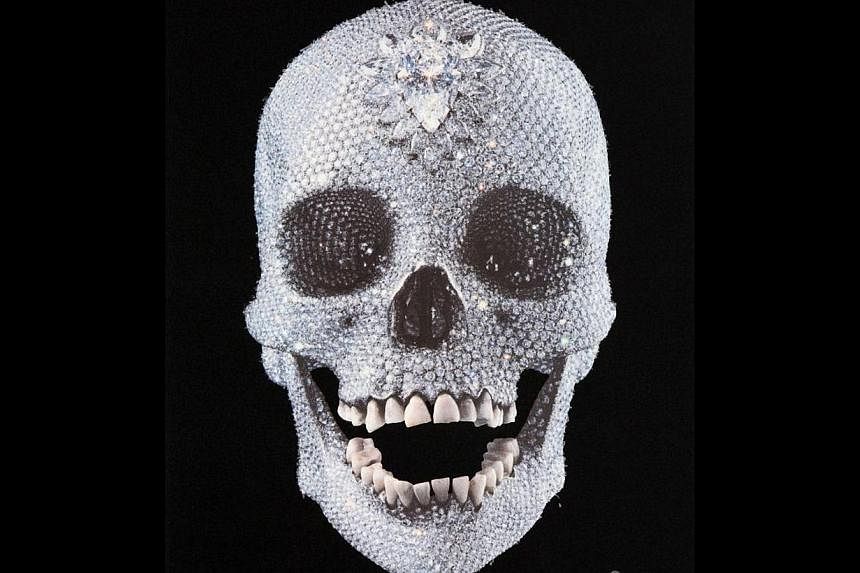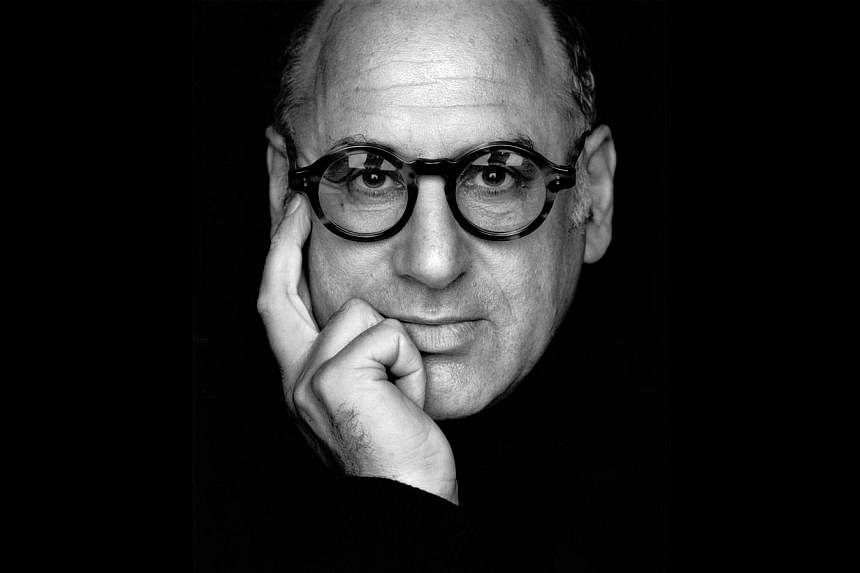The opening act of the Singapore International Festival of Arts is an opera "for the future, not for the fossilised", says its director Ong Keng Sen, who is also artistic director of the festival.
It is his rejoinder to American critics of the Michael Nyman-composed Facing Goya, after its debut at the Spoleto Festival USA in Charleston, South Carolina, in May.
The roughly two-hour opera with a cast of five will be held at Victoria Theatre today and Saturday, as well as a by-invitation gala on Thursday.
Pseudo-scientific statements replace dialogue for much of the production, which has been trimmed by Ong, with Nyman's blessing, from a 2½-hour version put on in 2000 by the award-winning British composer in response to growing interest in genetic engineering.
In Facing Goya, an Art Banker or collector of art (played by American singer and self-confessed Goya fan Suzanna Guzman) seeks the skull of Spanish painter Francisco Goya, whose body was found headless when his coffin was exhumed in the late 20th century.
Over the course of the opera, the Art Banker is cajoled by four other singers (tenor Thomas Michael Allen, baritone Museop Kim and sopranos Anne- Carolyn Bird and Aundi Marie Moore) into allowing the skull to be used to clone the body of Goya and bring him back to life.
The four other singers represent ideas or directions in science rather than the individual characters expected in a traditional opera, and their lines are statements such as "The sequence of the gene is always the same", rather than dialogue.
The non-stop flow of facts is eased by snappy staging - at one point, singers dance with giant glittering skulls on their heads - and music which is reminiscent of Nyman's popular soundtracks for films such as historical drama The Piano (1992) and grim futuristic movie Gattaca (1997).
The singers will be accompanied by members of the Singapore Symphony Orchestra under the baton of American conductor John Kennedy.
Director Ong, 51, says Facing Goya has been misunderstood and under-appreciated by early critics, who focused on the non-traditional aspects of libretto and score and mostly ignored the staging.
The New York Times wrote on May 28: "To put it kindly, this is an opera of ideas; to put it more accurately, it is high-minded pseudo-intellectual claptrap."
The Charleston City Paper review called it "weird and unexpected", while The Post And Courier newspaper, also from Charleston, hailed the subject matter as "interesting and provocative" but felt the opera "fell flat" because of a libretto (by Victoria Hardie) that is "shapeless, wordy, unfocused".
Ong says these reviewers might have been biased because "Nyman is not from the opera pantheon, he's seen as a film composer writing for the opera".
He adds: "I was shocked that the reviews were so often in the mode that 'This is how opera should be, how a libretto should be'. It's a way of thinking to exclude, to canonise a certain tradition.
"I think it's really important to talk about opera for the future, not opera for the fossilised. If the Singapore International Festival of Arts engages with opera today, how do we come in?"
He chose Facing Goya as a work representative of a 20th-century composer who has set his own style - Nyman was the first to use the phrase minimalism in music - in keeping with the festival theme of Legacy And The Expanded Classic.
Ong adds: "I wouldn't have directed La Boheme. As an artist of Singapore, talking from the margins, I need to find pieces I relate to and this is from the margins of what opera is."
Nyman, 70, declined to comment on the negative press about the revival.
In earlier interviews with Life! in Charleston, he was the first to call attention to the unusual aspects of Facing Goya.
He said: "It's an opera with a subject but without focus, without a face, without a purpose. Victoria and I wrote an opera, which is just basically a collection of information."
Long interested in neuroscience and genetic engineering, Nyman put Facing Goya together just as scientists were mapping the entire human genome and there was widespread speculation over what this knowledge of human genes could tell mankind about itself.
He found eerie echoes in this of the now discounted 19th-century science of craniometry, in which skull measurements were said to predict a person's intelligence. He and Hardie had used the idea of craniometry in a 1987 opera Vital Statistics and returned to this theme, weaving in news at the time that Goya's grave was found to be missing the artist's skull.
"The search for Goya's head is the search for Goya's genius, I suppose, and the incompatibility of measuring means for racial superiority and character and whatever, which can't and should not be applied to where artistic ability comes from," he said.
"I don't know where mine comes from, if there is some ability. I sit down at a piano and my hands and my head are simultaneously drawn to playing something, a musical idea which I think is suitable for me to express myself."
Ong thinks Singaporean audiences will appreciate the stand-off between so-called scientific rationality and the emotional appeal of art. He says: "The crux of the opera is what is art about? Is art about the head or the heart?"
He hopes viewers will consider "the trajectory of Singapore", from the 1990s boom in biotechnology industries, which still leaves many ethical questions about how to profit from such trade, to today's focus on high-profile, big-money arts events such as Art Stage Singapore, where art is assigned a dollar value.
"Now we are in the world of money: what can we sell? We can sell art, we can sell science, we can sell ourselves," he says. "It's really a morality opera."
WHAT YOU SHOULD KNOW BEFORE WATCHING FACING GOYA
Who is Goya?
Francisco Goya was a Spanish painter and print-maker (mid-18th to early 19th-century) whose style is considered to have inspired artists from Manet to Picasso.
His work ranged from lush nudes to dark, nightmarish scenes such as The Sleep Of Reason Produces Monsters (1797-99), which imagines him asleep and surrounded by winged demons. This latter print incidentally inspired some of the costumes of Facing Goya.
Why did Michael Nyman write this opera?
The British composer likes reading about science and wrote the score for the 1997 Hollywood film Gattaca, about a world where people with "superior" genes are preferred.
In the 1980s, he composed a one-act opera about the practice of craniometry - or trying to deduce a person's character through the shape and size of his skull - a practice adopted by people trying to show their genetic superiority over others.
Towards the end of the 1990s, he became aware of the growing interest in genetic research. The human genome was being sequenced, and scientists and the public were wondering what genes might be able to predict about a person.
He and librettist Victoria Hardie decided to write an opera contrasting the old and new sciences and querying the ethical and moral implications of both. Facing Goya premiered in 2000.



